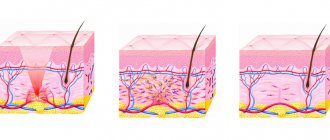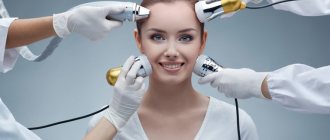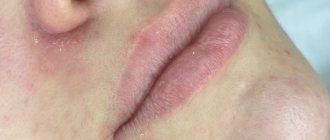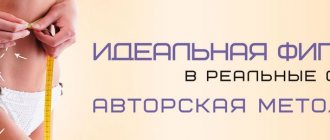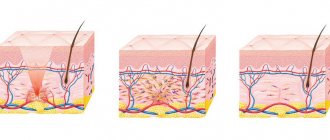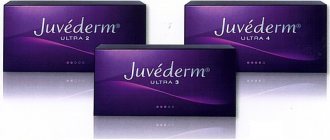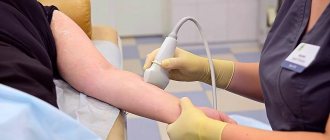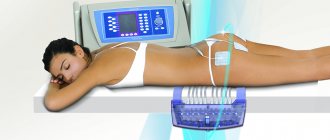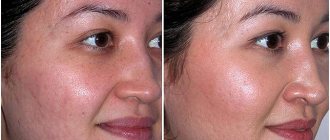What is Lymphatic Drainage of the Body?
Lymphatic drainage is used as a therapeutic, restorative, physiotherapeutic, restorative and cosmetic procedure. Depending on the indications, this type of massage is carried out as a course or as a preventive measure regularly - once a week. This type of procedure refers to osteopathic and manual techniques of influencing the body, and experienced osteopathic doctors handle this manipulation most professionally and competently. Despite the fact that many patients resort to this manipulation solely for aesthetic purposes, it is more of a medical procedure than a cosmetic one.
What is the lymphatic system
Blood delivers oxygen and nutrients to organs and tissues, which in turn release various metabolic products. This is where the lymphatic system begins its work. It is part of the vascular system and is involved in the process of cleansing the blood, and therefore the entire body.
Lymph flows through the lymphatic system. It is called living water, since it is it that removes all impurities and toxins. But it happens that the lymph stagnates and then acne, rashes, cellulite and swelling appear. And your mood disappears somewhere, because you don’t feel very good. Lymphatic drainage massage helps to cope with the problem.
What is lymphatic drainage massage and how does it work?
Lymphatic drainage massage was developed by a French doctor. He noticed that swelling in patients goes away much faster if you knead the area along the lymph flow lines. This technique was first used to treat veins, but is now being used to treat aesthetic problems as well.
Lymphatic drainage massage is a procedure that stimulates the lymph system and facilitates the movement of fluid in the body. Helps release cells and tissues from toxins.
Since lymph moves towards the heart (that is, from bottom to top), the massage must be carried out in this direction. During the massage, special massage lines are used, which cannot be crossed, otherwise the result will be exactly the opposite of what was expected. . But sticking to this rule is not at all difficult - the body itself will tell you where exactly you need to press.
Lymphatic drainage massage is a pleasant procedure. It consists of stroking and pressing. At first the movements are smooth, slow and soft to warm up the skin, but by the middle of the session they become denser and faster. But at the very beginning you may experience bruising and slight pain. this means that the lymph is very stagnant. Once you loosen it up and get it moving again, the procedure will become more enjoyable.
To achieve visible results, massage must be done regularly. So make time for it.
THREE-DIMENSIONAL VASCULAR DRAINAGE OF THE BODY ON THE STARVAK DEVICE
The cornerstone of any body care is tissue drainage. Whatever the cosmetic problem - skin aging, CELLULITE, excess weight, tired and heavy legs syndrome, rosacea or acne, the trigger for pathogenesis is almost always lymphostasis and delayed fluid excretion.
Tiina Orasmäe—Meder
Anatomically, a person is designed in such a way that the lymphatic and venous systems are responsible for the processes of interaction between tissues and organs, in turn, the intensity of tissue metabolism depends on the intensity of microcirculation, which in turn affects the volume of tissues, the balance of accumulation and removal of fatty deposits. The capillary network is well developed has an impact on the rate of aging and the nature of skin aging.
The lymphatic and venous systems are anatomically very close - they both represent a branched chain of a network of vessels and capillaries. These vessels and capillaries have an elastic smooth muscle system that allows fluid to move forward in the direction opposite to gravity. These vessels have valves, which in turn also prevent the reverse flow of venous blood and lymph. The movement (pushing) of venous blood and lymph is largely ensured by the action of anatomical pumps, the most important of which is the diaphragmatic one. The large muscles of the lower extremities and the plantar pump, the “shock absorber,” also play an important role. Ultimately, the lymphatic duct flows into the superior vena cava and the lymph mixes with venous blood.
The function of the lymphatic system is that it returns proteins and water from the intercellular space into the bloodstream, ensures the transport of fats and large molecular compounds, and performs a barrier and protective function.
The function of the venous system is that it carries out the outflow of blood, filled with metabolic products and carbon dioxide, from tissues and organs.
Contraindications for 3D massage:
- Violation of skin integrity
- Inflammation of the skin or blood vessels
- Infectious diseases
- Inflammation of the lymph nodes
- Oncological diseases
- Acute tuberculosis and the attack phase of rheumatism
- Exacerbation of chronic inflammatory processes
- Thrombophlebitis
- Increased blood clotting
- Cardiac dysfunction and decompensated hypertension.
INDICATIONS FOR USE
- An increase in the volume of intercellular fluid as a manifestation of insufficient functionality of the lymphatic system and an increase in the diameter of venous vessels and cascades leading to the volume of fluid in them (especially in the vessels of the legs) as a manifestation of venous insufficiency can lead to the development of many cosmetic problems and defects: - Tired and heavy legs syndrome. It manifests itself as a feeling of heaviness in the legs, they say “the feet are burning”, “tight shoes”, “the size has increased”. Many clients note that their legs swell, especially after flights and long periods of sitting.
- Edematous CELLULITE - CELLULITE in which tissue swelling occupies a dominant place. Lymphostasis and venous swelling are one of the triggers in the pathogenesis of cellulite, and when these phenomena worsen, local fat deposits can increase in volume and lead to more widespread edema.
- Slowing down the weight loss process by restricting nutrition or increasing physical activity. Since the lymphatic system ensures the transport of fats, lymphostasis (stagnation in the lymphatic system) can lead to a decrease in lipolysis (destruction of fat cells) even with fairly active actions aimed at losing weight.
- The appearance of rosacea and venous pattern Cuperosis and the appearance of a vascular pattern on the skin of the face or body are a consequence of a decrease in venous outflow. A decrease in venous outflow leads to an increase in the diameter of the veins. Subsequently, the vascular wall in these veins is damaged. The consequence of damage to the vascular wall is the appearance of jowls and the development of the aging process according to this type of deformation (when the shape of the face is lost due to the appearance of a double chin)
- Changes in the trophism of the skin—DRY, PASKING, INCREASED KERATINIZATION OF THE FEET AND SKIN OF THE LOWER EMBARKS, HYPERKERATOSIS OF THE BACK AND SHOULDER GIRDLE The lymphatic system is responsible for removing decay products and excess fluid from the body. It also affects the processes of keratinization (removal of dead cells from the surface of the skin) and skin nutrition. Therefore, with severe lymphostasis, the characteristics of the skin change. As a result, dry skin appears on the face, legs, and feet.
- Acceleration of the rate of natural aging. Chronic lymphostasis and accumulation of metabolic products and carbon dioxide in tissues due to venous microcirculation lead to the acceleration of natural aging processes of the deformation type.
PRINCIPLES AND EFFECTS OF DRAINAGE
- Three-dimensional impact
- In each anatomical zone, the effect is carried out at 3 anatomical levels: lymphatic organs (collectors and nodes); pump (muscular, plantar, abdominal, diaphragmatic, substernal); vascular and capillary bed (venous and lymphatic vessels)
- SELECTIVITY OF INFLUENCE - different depths of influence at 3 levels, a prerequisite for maintaining “superficiality of influence” at the level of vessels and capillaries.
- RHYTHMIC INFLUENCE and slow pace of all techniques. The flow rate of venous blood and lymph is much lower than the flow rate of arterial blood.
GOALS AND EFFECTS OF MASSAGE
- improvement of microcirculation and blood circulation
- calming and relaxing effect
- vascular strengthening effect
- drainage effect
- preparing for a weight loss course
- anti acne effect
- therapy for “heavy leg” syndrome
- removal of excess fluid.
VIDEO PRESENTATION OF THE PROCEDURE:
Indications
Lymphatic drainage massage is effective in the following cases:
- cellulite;
- postoperative scars;
- stretch marks;
- tendency to corpulence;
- swelling;
- phlebeurysm;
- obesity;
- metabolic disease.
If you once turned to plastic surgery and it left its mark, then lymphatic drainage massage can also help.
But it’s better not to lead to a problem, but to start doing massage for prevention. It definitely won't be redundant.
Indications and contraindications for lymphatic drainage
Indications for a course of lymphatic drainage are the following factors:
- Tendency to swelling of soft tissues and face, imbalance of water-lithium balance, provoked by pathologies of the cardiovascular or urinary system, hormonal disorders, allergies or liver diseases.
- Varicose veins and signs of congestion in the lower extremities.
- Excess weight, varying degrees of obesity, manifestations of cellulite.
- Feeling of heaviness in the limbs.
- Skin problems and diseases caused by metabolic disorders and hormonal diseases (menopause).
- Chronic fatigue, impotence, decreased body tone as a result of overwork, stress or after illness.
- Decreased immunity, frequent colds and viral diseases, allergies.
Lymphatic drainage is contraindicated in the presence of the following pathologies:
- thrombophlebitis in the acute stage;
- renal failure;
- tumor diseases;
- diabetes;
- hematopoietic diseases;
- infectious diseases of any etiology.
Electrical influences are not allowed in case of individual intolerance to current. Lymphatic drainage is not performed during pregnancy, lactation and menstruation. For any medical or cosmetic indication, any type of procedure (hardware or manual) should not be performed without first consulting a physician.
Zones for lymphatic drainage
Edema occurs in completely different parts of the body. But most often they affect the lower limbs and face. This is due to the fact that these zones are as far as possible from the heart and congestion forms there much more easily. And stagnation turns into stinking swamps of bacterial corpses, pathogenic cells and other debris that need to be dispersed and removed.
But most often, girls do massage on problem areas of the body - they get rid of the sides, folds on the stomach, saggy hips and cellulite buttocks.
Manual lymphatic drainage
The method of osteopathic and manual influence on all parts of the body in turn is highly effective in treating a number of diseases and disorders in the functioning of internal organs and functional systems of the body. This method cannot be classified as a very common procedure, for several reasons.
This is primarily due to the fact that manual lymphatic drainage must be carried out by an experienced and highly qualified specialist with professional knowledge of the anatomical structure of the body in general and specifically the lymphatic system. When working with a patient, an osteopathic doctor takes into account a lot of nuances, from the nature of existing disorders and general health, to the speed of lymphatic drainage and the individual characteristics of the body.
A qualified osteopath is distinguished by very high sensitivity of his fingers, thanks to which he can feel any pathological changes in soft tissues when touching and working deeply. Based on the nature of the seals, muscle tension, the condition of the skin and subcutaneous tissue, the doctor can not only determine the nature of functional and anatomical disorders, but also influence certain organs and areas of the body.
Osteopathic lymphatic drainage of the body is a purely individual process, so the duration and number of sessions can only be discussed approximately. As a rule, a general massage, which includes working on the whole body and face, takes about one and a half hours and consists of various techniques.
Types of lymphatic drainage massage
Lymphatic drainage massage can be performed with your hands and using special devices. Some are accessible to anyone, while others can only be used by specialists.
Manual techniques are divided into 3 classes:
- Superficial lymphatic drainage - circular movements are performed with gentle pressure. This method stimulates the work of capillaries, which are responsible for the accumulation and removal of fluid. After the massage, the lymph begins to move faster, and vascular spasm will disappear.
- Deep lymphatic drainage - with this method, movements are faster and more intense. Due to this, lymph vessels and deep muscle layers are worked out. This helps to activate blood flow, increase muscle tone and dilate blood vessels. Most often, this method is used on particularly problem areas - the abdomen, thighs and buttocks.
- Point lymphatic drainage - here the effect occurs specifically on the lymph nodes. This is where the massage begins.
Hardware technology involves the use of special devices. They are the ones who influence the tissues and activate the outflow of stagnant lymph.
The most popular hardware techniques:
- Vacuum massage - the procedure is reminiscent of treating a cold with medical cups. You will need special jars that apply pressure, as a result of which the lymph flow increases and excess fluid quickly comes out. Due to the rarefied nature of the air, cups allow you to act on the deepest layers of the dermis. In addition, they provoke the work of the sebaceous and sweat glands, so the effect of them is compared to going to the bathhouse. You can buy miracle jars on Beauty365.
- Pressotherapy - you put on special pants or boots and compressed air begins to press on the area. Essentially, it's like measuring blood pressure—a bandage is placed on your arm that produces pressure. Under the influence of compressed air, the blood begins to move faster and all stagnation is eliminated.
- Microcurrent – Small electrodes are attached to the face or body and deliver a pulsed current. The current, in turn, accelerates the removal of fluid from the body.
You don't have to resort to complex salon procedures to achieve good results. Moreover, the device may not be of high quality, and the technician may not be a professional. Don't trust your body in inexperienced hands! Better take care of yourself. Combine manual massage with vacuum massage and you will get amazing results.
Technique for performing lymphatic drainage procedure
Lymphatic drainage according to method and technique is divided into two types:
- Hardware lymphatic drainage of the body is a massage procedure performed using special medical (cosmetology) equipment. The most effective and popular hardware massage techniques are the vacuum method and microcurrent therapy. In addition to the use of various technological devices, hardware lymphatic drainage is classified according to the depth of impact on superficial and internal massage.
- Manual lymphatic drainage is a manual technique performed exclusively by the hands of a specialist. The effectiveness and therapeutic effects of manual massage directly depend on the professional knowledge, skills and skill of the doctor who performs this procedure.
How does a lymphatic drainage massage session work?
Lymphatic drainage is carried out using oil for better glide. Try squalane from Beauty365 - it will make the process as comfortable as possible. By the way, it is even suitable for cupping massage.
At the very beginning, the body is warmed up (as in a classic massage), and then they move on to the lymphatic drainage itself. It is carried out strictly along the flow of lymph and near the lymph nodes. This may take from 30 minutes to 2 hours. Depends on the number of problem areas, skin condition and your patience. You should start with a small amount of time and gradually increase it.
At the end of the procedure, the remaining oil is removed and a moisturizer is applied. It will be good if you lie down to rest. Therefore, it is best to carry out the procedure in the evening. If you are afraid of unpleasant sensations, steam your skin. This will make the body more obedient and elastic.
How is the procedure performed?
The mesococktail is injected under the skin to a depth of 2 mm. The distance between punctures is 0.5-2 cm.
The method of administration depends on the area of use of the drug.
In problem areas, injections are performed along massage lines towards groups of lymph nodes. If it is necessary to inject the entire body, then the drug is first injected into the main areas: along the lines along the spine, along the outer and inner surfaces of the thighs and calf muscles.
To make the procedure painless, the cosmetologist uses a cream with an anesthetic effect, and to prevent infection during punctures, the skin is treated with an antiseptic before and after the session. At the end of the procedure, a soothing serum is applied to the skin.
A mesotherapy session takes 15-30 minutes depending on the area.
In one procedure, 2-4 ml of the drug is used for the face, neck and décolleté, and 5-10 ml for the body.
The price list shows the price of one procedure using one ampoule (4 ml).
Contraindications
Any procedure has its contraindications. Lymphatic drainage massage has:
- dermatosis;
- acute infectious diseases;
- malignant tumors;
- pathologies of the lymphatic system;
- kidney problems;
- pregnancy;
- thrombophlebitis.
If you have any chronic diseases, be sure to consult your doctor. If you don’t feel well or something hurts, also be careful with the massage (especially if you do cupping).
Cupping massage should be avoided if there is irritation on the skin. Bruises are not a contraindication. On the contrary, jars will help make them lighter. But, if the bruises hurt, it is better to wait until they at least turn pink.
Always rely on your feelings. A massage should have a positive effect on your well-being, and if you feel unwell after it, it is better to consult a doctor.
How do you know if your lymphatic system is not working well?
When there is a disruption in the functioning of the lymphatic system, edema is the first to form. But such edema should be distinguished from stagnation of fluid in the body, which happens to any person from time to time. Did you eat a lot of salty foods at night or went to an alcoholic party? Is the weather hot outside or have you been on the road for a long time? Then swelling is a normal reaction of the body. If this repeats regularly, and the fluid is retained in the body for a long time, then it’s time to sound the alarm - the lymph is not doing its job.
Most often, with stagnation of lymph, swelling is observed in the extremities. Moreover, only one arm or leg can swell. This indicates a unilateral accumulation of lymph. The face, chest, abdomen and, most dangerously, internal organs may also swell.
By the way, “orange peel” on your thighs is not only unsightly, but also shows that there is stagnant fluid in the body, which means the lymphatic system is not working well. Cellulite is swollen and overgrown connective tissue.
Right now, press your finger on the swollen area. If even after light pressure there is a dent on the skin that is slowly leveling out, then it’s time to urgently take care of your health. Start with normalizing your drinking regime and lymphatic drainage.
Hardware lymphatic drainage
Vacuum lymphatic drainage is mainly performed to target problem areas in order to reduce fat deposits and improve skin tone. According to the technology, the vacuum effect extends to the dermis of the skin and subcutaneous fatty tissue. During vacuum massage, the skin and superficial subcutaneous layers are drained, after which fluid from the tissues enters the lymphatic vessels and is drained naturally.
Hardware body massage using the vacuum method is more of a cosmetic manipulation aimed at eliminating the manifestations of cellulite and combating excess weight, as it has a targeted effect and limited depth. With the help of such manipulation, it is possible to improve the circulation of lymph and blood in the surface layers of the skin and epidermis, which, with a systematic approach, guarantees a decrease in the volume of fat deposits, improvement of skin tone and color by stimulating metabolic processes, activating blood circulation and eliminating chronic stagnation of fluid in tissues.
The duration of one procedure varies from 30 to 60 minutes depending on the indications and individual characteristics of the patient. The most noticeable impact of the body lymphatic drainage procedure using a vacuum apparatus is felt during a course of 10 sessions. It is this approach that guarantees powerful cleansing of the skin and subcutaneous layers from water, toxins and pathogenic microorganisms accumulated in the intercellular space during lymph stagnation.
However, it is worth noting that vacuum massage has some contraindications and before carrying out the procedure, consultation with an osteopath, attending physician (in the presence of chronic diseases) or a therapist is necessary. If a person has very sensitive skin that is prone to damage, lymphatic drainage using the vacuum method can cause capillary injuries and the formation of subcutaneous hematomas of varying severity.
How is lymphatic drainage massage beneficial for you?
Nowadays, many people lead a sedentary lifestyle, eat poorly and sleep little. All this leads to disruption of the lymphatic system.
It is lymphatic drainage massage of the body that helps remove toxic substances, toxins and other waste products from the body.
Massage also activates metabolic processes, normalizes lymph circulation, slows down the aging process and strengthens the immune system. The skin becomes elastic, soft and smooth.
For the best effect, complement the massage with gymnastics and walks in the fresh air. This also helps disperse the lymph and you will begin to feel much better.
Hardware lymphatic drainage using pressotherapy method
Pressotherapy is a physiotherapeutic method of influence, which is carried out using a special compressor worn over the whole body. The compressor consists of individual cuffs that are inflated one by one, squeezing soft tissue and directing the outflow of venous blood and lymph. The entire process is automated; the specialist only needs to correctly position the compressor and control the sequential activation of individual compartments.
This type of lymphatic drainage helps direct the movement of lymph along natural outflow pathways, which eliminates fluid accumulation and stagnation in tissues. In addition to influencing the vessels and channels of the lymphatic system, the pressotherapy procedure stimulates the lymph nodes, which has a beneficial effect on the immune system, tones the body and increases its protective mechanisms.
Techniques for performing lymphatic drainage body massage
Although there are several lymphatic drainage techniques, they all start the same way - with light stroking and pinching. It is very important to warm up the skin and prepare it for mechanical impact, so as not to accidentally damage it.
If you decide to start working with banks, then be prepared for bruises. It will hurt at first (and the stronger the stagnation, the more painful it is), but in the end you will definitely feel lightness. Bruising may also occur. For beginners they will be 100%. Prepare an ointment with traumeel or arnica to minimize damage.
You should start training with the buttocks and, after assessing the consequences and sensations, gradually move on to the hips. You can always cover bruises there. How to do a massage correctly, watch the video:
When you get used to it, you can move on to other parts of the body. For example, take care of stretch marks and sagging belly:
Carry out the massage with your hands along the same lines as the cupping massage. Make circular and patting movements, pinch the skin a little and rub tightly. Don’t worry if the skin turns red - this shows that blood has rushed to the treated area, which means you are moving in the right direction - the lymph is already waking up from hibernation and is preparing to get rid of everything that has accumulated in the body.
Lymphatic drainage massage after physical training
If you play sports, then lymphatic drainage massage will enhance the results. You will become more resilient, and there will be no severe pain after sports, since lactic acid will not linger in the muscles. The procedure will relieve tension, speed up metabolic processes and remove all toxins. In addition, lymphatic drainage will prepare the body for the next workout.
Almost all athletes, and even beginners, experience muscle tension. You may feel tension in your lower back, shoulders, shoulder blades and neck. Massage saves you from all this. Pay special attention to areas that hurt. This means there is a large stagnation of fluid that needs to be eliminated.
Lymphatic drainage even affects the psychological state. Relieves the nervous system, relaxes and allows you to rest. It turns out double relaxation - sports and massage. And you can do all this on your own, without outside help.
Lymphatic drainage massage: how to do it at home?
At home, you can do not only manual and cupping massage, but also dry massage. This procedure not only accelerates the blood, but also exfoliates dead particles of the dermis. Scrub and massage in one! Beauty 365 has good brushes.
This procedure must be done before showering, bathing or other contact with water. Make circular movements with the brush, gradually moving up from your feet to your décolleté. Pay attention to every part of the body (except for the popliteal area). The first few times it is better to stand in the bathroom, because the old skin will fly in different directions. If you have a dry skin type, then this will happen every time. But in the end, your whole body will be smooth and rosy, and cellulite and swelling will no longer torment you every morning.
How to prepare for lymphatic drainage massage?
Lymphatic drainage massage does not require any special preparation. The only thing you can do is light scrubbing before the procedure and steam the skin (especially the first few times).
There are also a number of conditions that must be observed for the best effect:
- Give up alcohol at least for the duration of the lymphatic drainage massage course. Alcoholic drinks retain fluid in the body, and you just want to get rid of it. Do not harm yourself, but rather help;
- Watch your diet - more vegetables with a high fiber content and less food “garbage” (convenience foods, sweets, etc.);
- Limit the amount of liquid you drink before bed, but throughout the day, drink as much water as your body requires. In this case, you won’t want to pour liters into yourself before resting.
It is better to do a massage in the evening (just wait a few hours after dinner). For best results, drink a glass of warm water before the procedure.
Lymphatic drainage massage of face and neck
Lymphatic drainage massage of the face and neck will not only reduce swelling, but will also highlight cheekbones, remove sagging skin and wrinkles. This is a good way to prevent aging.
In the video you can see the safest and most enjoyable method of lymphatic drainage for the face:
But, of course, for a beautiful and healthy body, it is not enough to just massage. Proper nutrition, exercise and cleansing are very important. It is difficult to independently create the right program that will work. And in the end you may give up everything altogether. To prevent this, sign up for the “Flourish” marathon. There you will learn not only how to properly care for yourself, but also how to truly love.
